A Happy Meal at McDonald’s
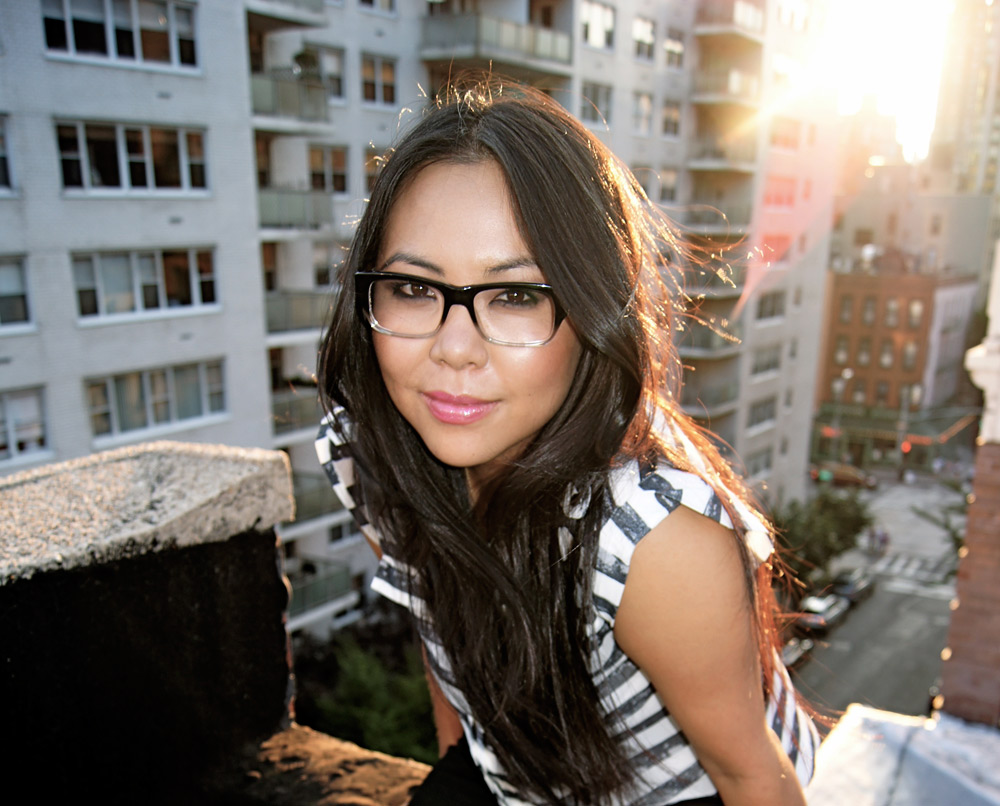
By Harvey D. Shapiro
When New York City police officers began to be summoned to a McDonald’s branch in the borough of Queens earlier this year, they didn’t know if they would encounter burly thugs intimidating customers, or Mafioso shaking down the owner, or just unruly teenagers. Instead, they found a quiet group of diminutive Koreans in their 70s and 80s. But the owner wanted them ejected because they were spending most of the day nursing a single $1.09 cup of coffee, leaving few seats for other customers, particularly during the busy lunchtime hours.
After repeated efforts to evict these senior citizens, the McDonald’s owner found himself embroiled in a growing political dispute that not only reflected contrasting views regarding the treatment of the elderly but also the rising power of New York’s 100,000 Koreans in the city’s constantly changing demographic and political mosaic.
To be sure, there was a sign posted limited customers to a 20 minute stay, yet the aged Koreans, some of whom arrived using canes or walkers, sat around for hours, often getting free refills for the single cup of coffee that each bought. The owner said he was losing business because other customers couldn’t find any place to sit, but he found himself accused of mistreating the elderly, who are held in high esteem in the culture of Koreans and many other Asians. There was little sympathy for the management in the heavily Korean neighborhood, and community leaders were proposing to mount a “worldwide boycott” against McDonald’s.
The dispute was soon being reported in New York City newspapers and on television as community leaders descended on this outpost of the Golden Arches. Ron Kim, a Democrat who represents Flushing and is the first Korean-American elected to the state legislature got involved. So did Hee-Jin-Park-Dance, a Korean police officer in the NYPD Community Affairs Bureau.
The result was a brokered agreement in which the elderly Koreans would be welcome to sit as long as they wanted during the day — but they agreed to vacate the premises during lunch hour.
All sides professed to be happy, and while it can be seen as a victory for Confucian values of respecting the elderly, the agreement can also be seen as the New York City assimilation mechanism learning to accommodate yet another group in the city’s ethnic mosaic.
Koreans started coming to the U.S. in substantial numbers after a new law in 1965 increased the immigration quotas for Asians instead of continuing to favor Europeans. In the 1960s, Korea was a poor country which many viewed as under threat of attack from North Korea. and soon one out of three immigrants from Asia came from Korea.
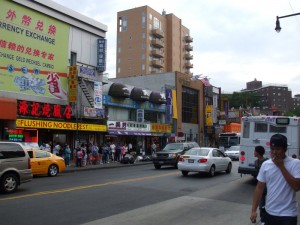 A “Koreatown” was established on 32nd Street, near the garment district as a number of buildings in the area soon found their ground floors filled with Korean restaurants and bars, while upstairs there were offices of Korean companies, and the steam baths and massage parlors that are popular among men and women in Korea.
A “Koreatown” was established on 32nd Street, near the garment district as a number of buildings in the area soon found their ground floors filled with Korean restaurants and bars, while upstairs there were offices of Korean companies, and the steam baths and massage parlors that are popular among men and women in Korea.
Some 20,000 Koreans have ended up living in Manhattan, but far larger numbers headed to central Queens. These days some 75,000 Koreans live in that area that abuts even larger Chinese and Indian communities. (Hence, the number 7 train from mid-Manhattan to Flushing has been dubbed “the Orient Express.”) Walk up and down streets like Northern Boulevard, and the signs in the shop windows are all in Korean. There are a host of Korean Protestant churches, plus schools, and noraebang (i.e. karaoke) bars. Near one subway station, there’s a Meojagolmok, or street of Korean restaurants.
In contrast to other immigrants seeking to escape political oppression or find religious freedom, the Koreans came for economic opportunity. Some got involved in trading companies, selling goods to and from Korea. But in the early 1970s, many Koreans noticed that it was difficult to find fresh fruits and vegetables in New York, even in affluent neighborhoods, because supermarkets were emphasizing prepared and packaged foods. Meanwhile, the Italian immigrants, who had come in the 1920s and who dominated the fruit and vegetable business were getting ready to retire or were dying off. It was a good business for immigrants because you didn’t need much capital and you didn’t need to speak much English.
Korean families often pooled their money and bought or opened a store. Once a few got into the business, family members, neighbors and fellow church members shared information about available locations and helped would-be merchants raise money and learn the business. A Korean Produce Association was formed, and in the 1970s it grew to some 3000 members. (In America, immigrants often flock to the same occupations; so while the Koreans got New York’s green grocers — and also dry cleaning shops — Indians bought vast numbers of motels, and the kitchens of countless restaurants came to be staffed by Mexicans. )
The produce business could be profitable, but it was difficult. Many stores were open 15 hours a day seven days a week, and the proprietors lived in a back room. Koreans were willing to open stores in poor neighborhoods that the Italian merchants were abandoning. There was mutual distrust, and one result in 1990 was a months-long boycott of some Korean stores mounted by Black leaders in Brooklyn who argued that the Koreans didn’t treat them with proper respect. Nonetheless, many Koreans prospered. Their history was summarized in a newspaper profile of one Korean grocer who said he closed his store only one day in 20 years – to attend his son’s graduation from Princeton University. The son did not go into the grocery business.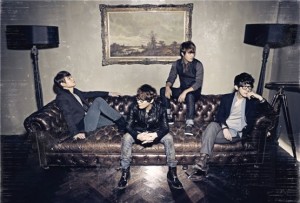
Thus, it’s not surprising that the dramatic inflow of Koreans into the grocery business is now turning into an ebb tide. The number of Korean grocery stores has fallen to perhaps 1500 by some counts, half of the earlier total, and the Korean-American Grocers Association, which had nearly 600 members in 2000 now has less than half as many active members.
The pace of decline is accelerating as American interest in healthier eating has given rise to massive markets that emphasize fresh fruit and vegetables, like Whole Foods and Fairway. And the sharp decline in the crime rate has led more grocery chain stores to open supermarkets in the city. They can offer a wider array of produce at lower prices while facilitating one-stop shopping for all food items. Corner grocery stores need to either go out of business or grow into full-fledged supermarkets.
But the Koreans were ready to move on. The next generations of Koreans are becoming professionals. As they prosper, they are moving from apartments in Flushing to single family houses in eastern Queens. In Jamaica Estates, for example, what was once a community of Jewish families is now increasingly Korean. There are also sizable Korean communities in northern New Jersey. (Of course, the biggest U.S. Koreatown is on the west side of Los Angeles.)
Meanwhile, as South Korea has prospered, immigration has declined. The numbers peaked at some 36,000 in 1987 and the annual numbers are now down by more than a third. Many of the immigrants continue to head for Flushing, where they find the small scale entrepreneurs of the 1970s are now senior citizens. These older people are still acclimating to a new way of life in America (and, indeed, in Korea as well). Respect for the elders is important, and it was assumed a couple would take care of their parents. But what if the wife is working? And what is the role of grandparents when children have taken up the American lifestyle of after school play dates and ballet classes as well as weekend soccer games and summers at sleepaway camps?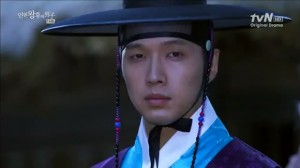
So what to do all day? There are now a number of senior citizen centers offering activities all over Flushing. And the Flushing Public Library is the busiest branch library in New York City. But what could be better than to join your fellow Koreans for a nice cup of coffee. You can sit there for hours as friends come and go; you can talk about your children’s achievements, share news about people you all know, and relive those days back in the old country. And what better place to do it than McDonald’s where a cup of coffee costs only $1.09, barely a quarter of the cost of one of those unfamiliar coffee-like concoctions at Starbucks. So pull up a chair and join your Seoul-mates. Just don’t do it during lunch hour.
##







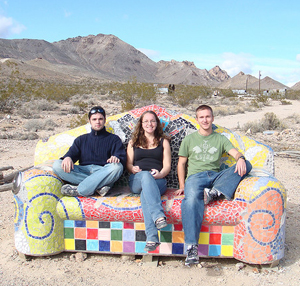





Social